I spent much of my childhood visiting castles, ruins, and other areas of historical or mythical significance. Bedtime stories were often those of Greek mythology, and I’d lose myself in the adventures of Jason and the Argonauts, Odysseus, Hercules, and more. Although I didn’t realize it at the time, these experiences would sow the seeds of desire for the adventure that has inspired my lifestyle ever since.
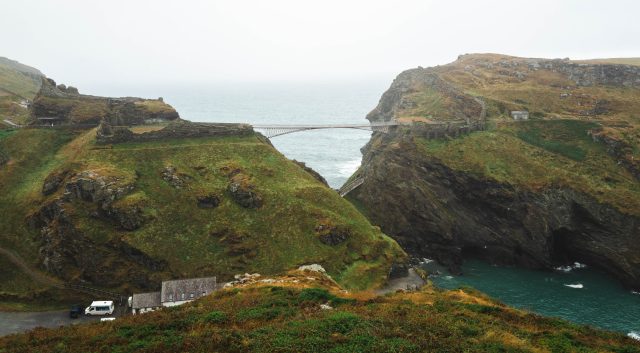
At university, I wrote a thesis on how the transition from Paganism to Christianity in the 3rd century Roman Empire impacted ideals of masculinity with a particular focus on the virility presented in both Greek and Roman myth. These stories of grand adventure were a source of inspiration and certainly played a part in quitting my job in London, moving into the van full time, and embarking on my own odyssey. Subsequently, my travel itinerary almost always includes visits to locations of historical significance, and my recent trip to Cornwall was no exception. At the top of my list was the mythical birthplace of King Arthur, Tintagel Castle.
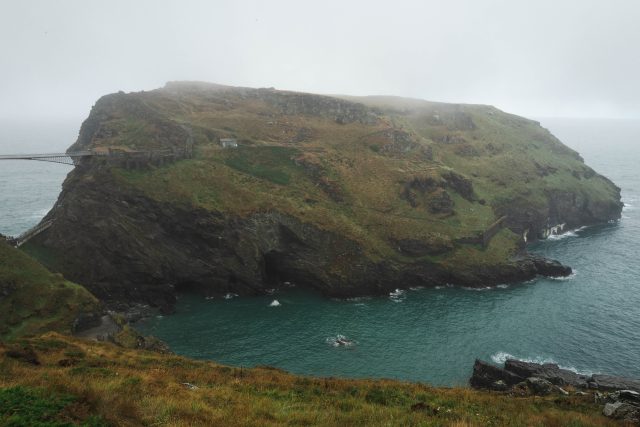
The site has been inhabited since Roman times, evolving throughout the years and becoming a successful Mediterranean trading post between AD 450-650. It wasn’t until the 12th century that Geoffrey of Monmouth named it the location of King Arthur’s conception in his book History of the Kings of Britain. It’s thought these claims inspired Richard, Earl of Cornwall, to build a castle at Tintagel in the 1230s.

The island itself is surrounded by ocean and steep cliffs albeit for a narrow passage of land that acted as a convenient bridge to the mainland. It’s therefore the perfect strategic location for a fortification and even has its own freshwater source. The historic cliff-top walkway collapsed somewhere between the 14th and 17th centuries so in 2019, English Heritage installed the impressive 70-meter Tintagel Bridge as a modern take on the original crossing. The organization also commissioned an 8-foot (2.4-meter) bronze sculpture said to be King Arthur which stands on the cliffs of Tintagel with the intention of bringing to life the mythical history of the site. The sculpture, created by Rubin Eynon, is titled “Gallos” meaning “power” in Cornish and was helicoptered into place.
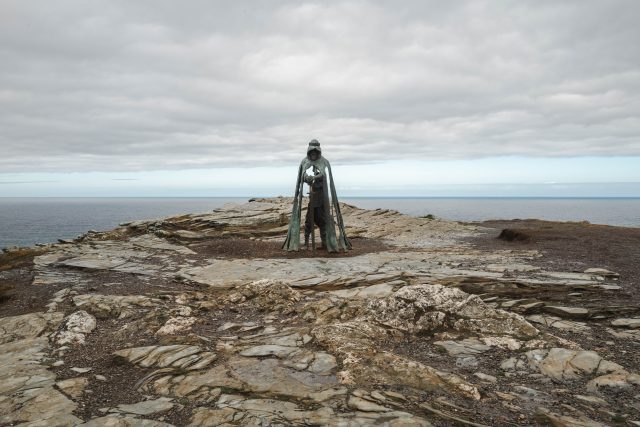
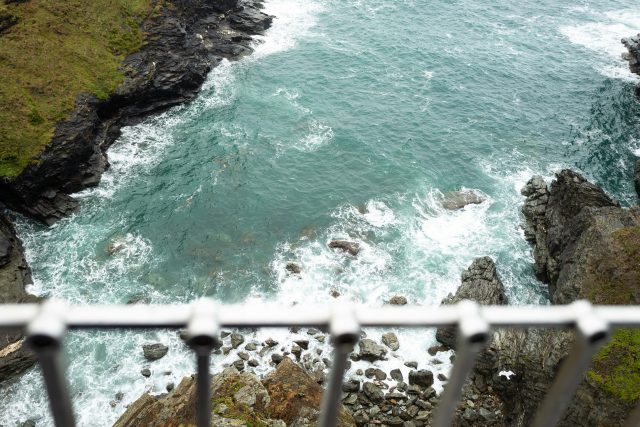
The myth and legend continue beneath the island where at low tide visitors can explore Merlins Cave, which stretches 330 feet (100 meters) from one side of the island and exits the other (look for Merlin’s face carved into the rock beside one of the cave entrances by artist Peter Graham.)
National Heritage has been accused of “Disneyfication” for erecting the Gallos and carving Merlin’s face, and while I understand the importance of separating history from myth, I see no harm in bringing the legend to life.
If you’re planning to visit there are a number of local campgrounds with The Headland Caravan Park being the closest to the castle. During the summertime the site is extremely busy so booking online ahead of time is advisable (entry prices vary, but adult tickets are £17.60.)

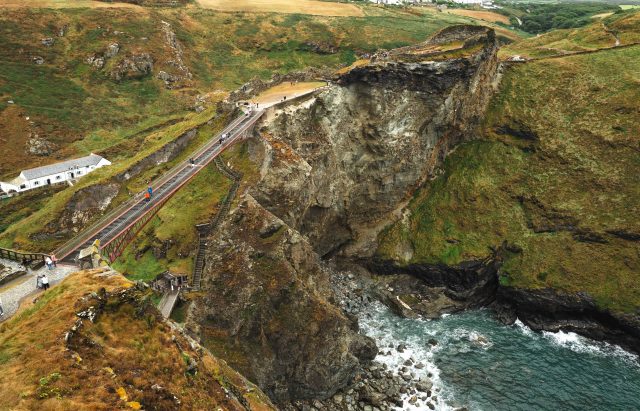
Ordinarily, I get to tourist hot spots as early as possible, but unfortunately, the castle doesn’t open until 10 a.m. (it closes at 5 p.m.) When I arrived it wasn’t super busy, and I was able to get ahead of the other visitors to explore the battlements alone for some time. I was the first person that morning to reach the sculpture of Arthur, and it was undoubtedly the highlight of my visit. It was a misty and overcast day which added to the experience as I made my way to the Gallos. The sculpture is located at the head of the island (which appears to be the highest point) with breathtaking views of Cornwall’s rugged coastline and the Atlantic Ocean. There are information boards throughout the grounds telling the story of Tintagel along with various ruins and battlements to enjoy.


I loved Tintagel and thoroughly enjoyed immersing myself in the Arthurian mysticism that has made the castle so iconic. I was unable to explore Merlin’s Cave this time around due to high tide, and that was a real shame. I’d suggest visiting at low tide to enjoy the full experience. If you’d like to find out more, visit english-heritage.org.uk.
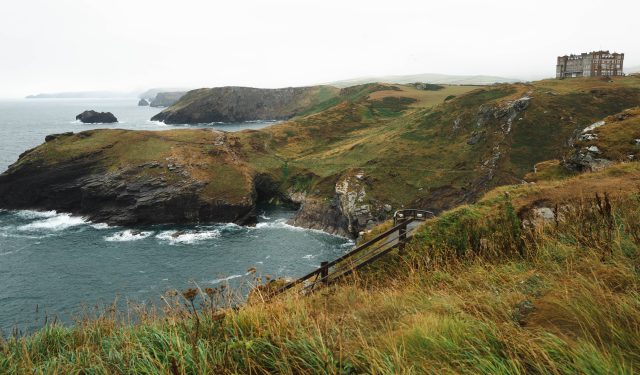
Our No Compromise Clause: We carefully screen all contributors to ensure they are independent and impartial. We never have and never will accept advertorial, and we do not allow advertising to influence our product or destination reviews.


